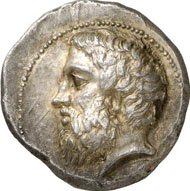80,000 Euros for a work of two Sicilian die cutters
For an impressive amount of money some extraordinary Greek coins were auctioned at Gorny & Mosch’s, Giessener Münzhandlung on October 10. One of them is a remarkable tetradrachm from Syracuse whose story you will read here…

















